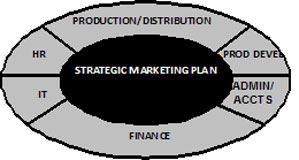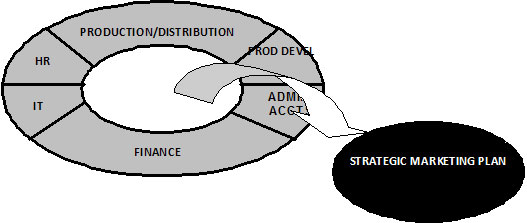1.1.1 What's The Point Of Planning?
Author’s note - I’ve included this article in the Resource Library because it shows the thinking that led ultimately to The Wagon Wheel
Most of us are familiar with that rather sanctimonious saying that "if you fail to plan, you plan to fail". It’s true. But most of us spend a lot of time rationalising the absence of such a plan by such thoughts as "it's in my head", or "we all know where we are heading" or "everything changes so quickly these days that it would be out of date the moment we finished it".
However, I suspect that at the heart of our reluctance to develop a business plan is our inability to define what such a plan should encompass and the lack of a process or a model for generating one.
When I think about a business plan, I’m thinking about a five year planning horizon and I’m thinking "big picture", not a mass of detail and endless tables of numbers. In short, I’m thinking strategically and strategic planning is very different from other forms of planning.
Strategic planning emphasises the following:
- In strategic planning, the organisation’s environment and context are the primary determinants of strategy, choices and direction; in other planning, the organisation’s strengths and weaknesses are the primary determinants.
- Strategic planning puts the emphasis on doing the right thing; other planning focuses on doing things right.
- Strategic planning is oriented towards change; other planning tends to emphasise the status quo.
- Strategic planning tries to anticipate change; other planning involves an extrapolation of the future from the past.
- Strategic planning is pro-active; other planning is reactive.
- Strategic planning is action oriented - even when ambiguity exists; with other planning when ambiguity exists, inaction is too often the result.
An engineer once put this last point to me rather graphically by using the principle of motion and the force required to change direction. He pointed out that before the advent of power steering, it was much easier to change direction travelling at 60kph than at 5 kph. Likewise with organisations - it’s much easier to change direction the faster you are moving forward.
The speed of change in the business environment should be a powerful incentive to plan yet so often it is used as an excuse not to.
Having decided on the necessity for developing a business plan, the next step is to adopt a process that tells you where to start and how to get to the finish.
I’ve no doubt in my mind that the commercial goal and the strategies to achieve it are at the heart of a Strategic Business Plan. Many people, including myself, refer to this component as the Strategic Marketing Plan.
In explaining to people the relationship between the Strategic Marketing Plan and the Strategic Business Plan, I use the analogy of a dinner plate.

The strategic business plan
The centre of the dinner plate is represented by the Strategic Marketing Plan whilst the rim of the plate represents the other components of the Strategic Business Plan.
If the Strategic Marketing Plan is removed, the core of the Strategic Business Plan no longer exists just as our dinner plate ceases to function as one.

On the other hand, you can have a stand-alone Strategic Marketing Plan - the dinner plate has just become a side plate, that’s all.
The functions that are represented by the rim of the plate will vary from company to company depending on the nature of the business. In the example above, the rationale runs like this.
Having developed a Strategic Marketing Plan, what impact will its implementation have on Production, Distribution, Accounts, Administration and Product Development? What, in turn, will be the impact of these functions on Information Technology and Human Resources? And, finally, what will be the impact of all these functions on Finance?
If the development of a Strategic Business Plan follows this format, it should result in a program of initiatives all adopted with one goal in mind - to turn the Strategic Marketing Plan into reality.
And if, due to events beyond your control, the Strategic Marketing Plan requires revision, you can quickly ascertain the impact of such changes on those functions around the rim of the plate. How will Product development be affected by this change in marketing strategy? Will those changes have an impact on HR or finance? Is an organisational restructuring called for?
Yes, it’s much easier to change direction when inertia has been overcome. The organisation has steerage way.
How does one develop a Strategic Marketing Plan? That will have to wait till next time!






